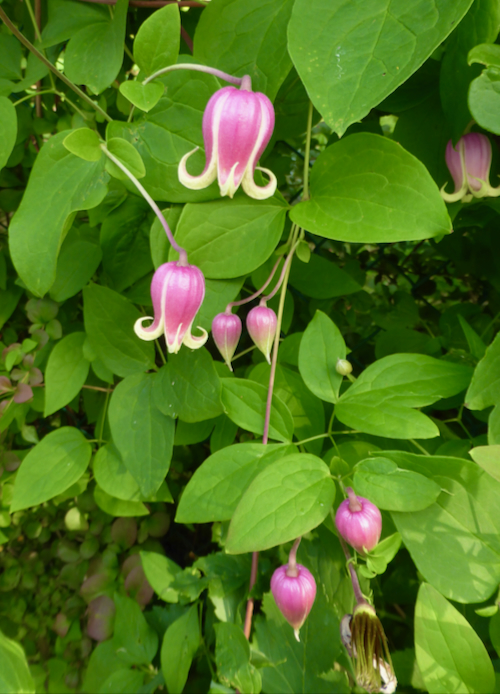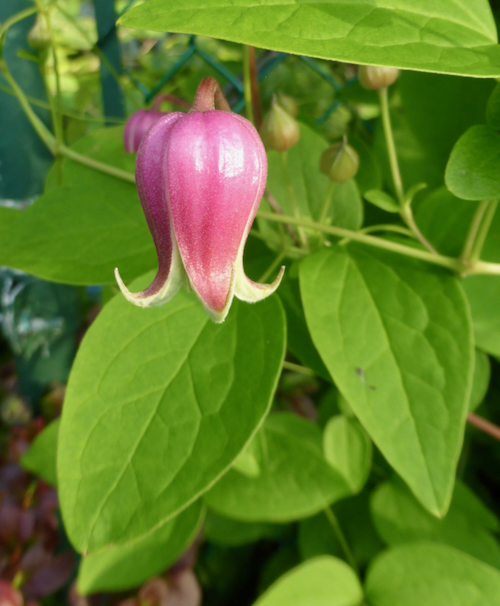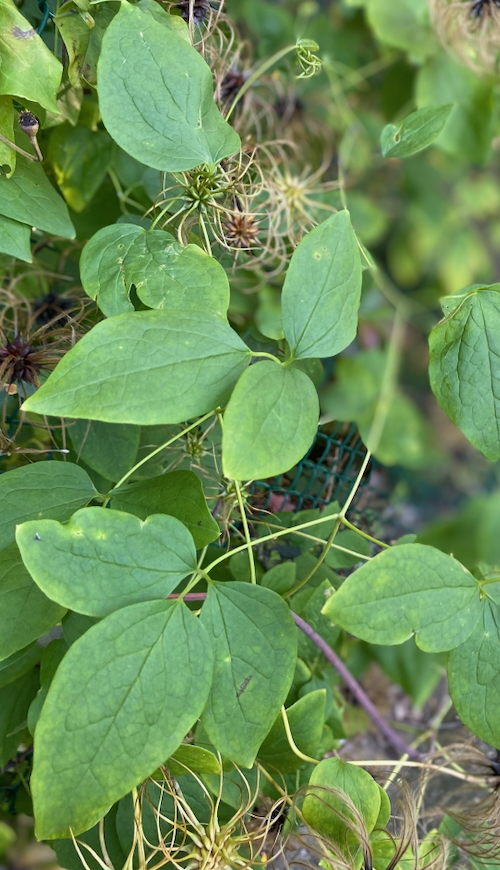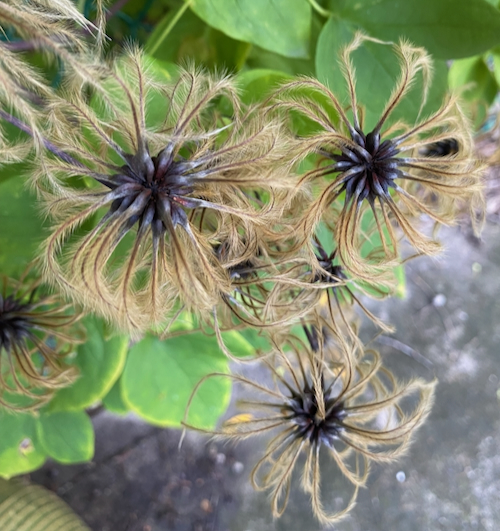
Plant of the Month October 2025
GENERAL INFORMATION: The late Fred Case gave me a plant 20+ years ago. This was a seedling from a plant in his Michigan garden which was grown from wild collected seed. It now grows happily on the fence surrounding our pool. There are many varieties of this versatile Clematis. The Clematis International 2025 lists 37, of varying colours but all the same basic structure.
Common Name: Leatherflower or vasevine, + many more.
Life Cycle: Perennial vine, dying to ground in winter.
Height: Up to 4m.
Bloom Time: in Southern Ontario - June, July, flowering on new stems.

Clematis viorna.
Flower Colour & Size: Single, down facing, urn-shaped bells, approx. 2 cm long, usually reddish in colour with curled, upturned, cream tipped tepals. These are thick, usually 4 in number.

Clematis viorna - close up.
Leaves: Compound pinnate leaves with twinning petioles.

Clematis viorna - leaves.
Fruit: The “seeds” are botanically fruit. They are one-seeded achenes, with long feathery tails. In C. viorna, they about 4 cm long, green when immature, ripening to gold and then brown. Collect promptly when ripe - chipmunks love them!

Clematis viorna - "Seeds".
Range: South East United States.
Habitat: Open woodlands, stream banks, thickets.
CULTIVATION:
Plant: where there is room to spread.
Light: Part shade to full sun.
Soil: Many soils, including sandy and rocky soils. Must be well drained.
Water: Average.
USDA Hardiness: Zones 4 - 9.
Pests and Diseases: Usually trouble free if well drained.
Companion planting: Other small shrubs or trees as a support.
Pollinators: Butterflies, bees, hummingbirds and other birds.
Pruning: Cut down to ground in early spring. (Pruning Group 3) Be careful not to damage emerging new shoots.
Propagation: By seed, cuttings or layering.
Seedex availability: Often available in various seed exchanges.
Germination Tips: Sow @ 20°C. Seed germinates within 3 months. Will gently self seed in the garden.
Problems: Should be no problems if well drained.
Toxicity: Mouth pain and ulcers if eaten! Leaves and sap are poisonous to cats, dogs and horshttps://www.gardenia.netes.
References:
https://en.wikipedia.org/wiki/Clematis_viorna
https://plants.ces.ncsu.edu/plants/clematis-viorna/
Text and images supplied by Anna Leggatt
